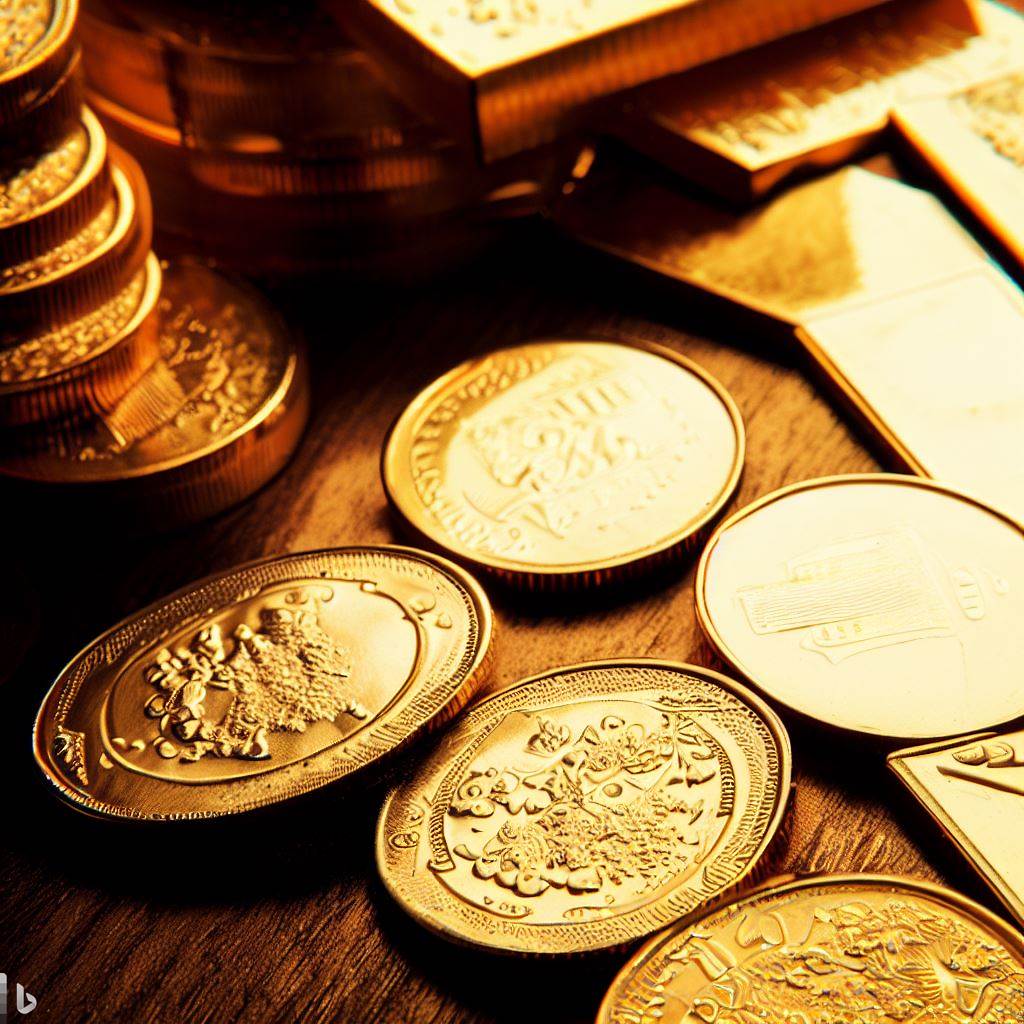What would happen to the Australian currency and the value of gold and silver if the US went into a recession?
The United States is the world’s largest economy and a major trading partner for Australia. Therefore, any economic downturn in the US would have significant implications for the Australian currency and the value of gold and silver, which are often seen as alternative or safe-haven assets.

The Australian dollar and the US recession
The Australian dollar is a commodity currency, meaning that its value is influenced by the demand and supply of commodities such as iron ore, coal, and natural gas, which Australia exports mainly to China and other Asian countries. The Australian dollar is also affected by the interest rate differential between Australia and the US, as well as the global risk appetite and sentiment.
If the US went into a recession, it would likely reduce its demand for commodities, which would lower their prices and hurt Australia’s export income. This would put downward pressure on the Australian dollar, as it would make it less attractive relative to other currencies. Moreover, a US recession would also dampen the global economic outlook and increase uncertainty and volatility in financial markets. This would reduce the risk appetite of investors and make them seek safer assets such as the US dollar or the Japanese yen, which would also weigh on the Australian dollar.
However, there are some factors that could mitigate or offset the negative impact of a US recession on the Australian dollar. One is the policy response of the Reserve Bank of Australia (RBA) and the US Federal Reserve (Fed). If the RBA kept its interest rates higher than the Fed, or if the Fed cut its interest rates more aggressively than expected, it could widen the interest rate differential between Australia and the US, which could support the Australian dollar. Another factor is the performance of China and other Asian economies, which are Australia’s main trading partners. If China and Asia could maintain their growth momentum despite a US recession, or if they implemented stimulus measures to boost their domestic demand, it could sustain their demand for Australian commodities and support the Australian dollar.
According to some estimates, a 1 percentage point decline in US GDP growth could lead to a 3 to 4 per cent depreciation of the Australian dollar against the US dollar in the short term1 However, this effect could vary depending on how severe and prolonged the US recession is, how other countries react to it, and how resilient Australia’s economy is.
Gold and Silver and the US Recession
Gold and silver are precious metals that have been used as money and stores of value for centuries. They are often considered safe-haven assets that can hedge against inflation, currency devaluation, geopolitical risks, or financial crises. They are also influenced by supply and demand factors, such as mining production, central bank reserves, jewellery demand, industrial demand, or investment demand.
If the US went into a recession, it would likely increase the demand for gold and silver as safe-haven assets, as investors would seek to protect their wealth from market turmoil or currency depreciation. A US recession could also trigger an expansionary monetary policy by the Fed, which could lower interest rates and increase the money supply. This could weaken the US dollar and create inflationary pressures, which could also boost the demand for gold and silver as hedges against inflation or currency devaluation.
However, there are some factors that could limit or reduce the positive impact of a US recession on gold and silver prices. One is the opportunity cost of holding gold and silver, which do not pay interest or dividends. If interest rates in other countries remain higher than in the US, or if they increase more than expected, it could make gold and silver less attractive relative to other income-generating assets. Another factor is the liquidity preference of investors, which means that they may prefer to hold cash rather than gold or silver during times of crisis or uncertainty. This could reduce their demand for gold and silver or even lead them to sell their holdings to raise cash.
According to some studies, gold tends to perform well during recessions, especially when they are accompanied by high inflation or currency depreciation2 Silver tends to follow gold’s movements but with higher volatility due to its dual nature as both a precious metal and an industrial metal3 However, this relationship is not always stable or consistent, as gold and silver prices can also be affected by other factors such as market sentiment, speculation, technical analysis, or unexpected events.
Disclaimer: This article is intended as an opinion piece and does not constitute financial advice. Investing in bullion carries risks, and individuals should conduct thorough research and consult with a qualified financial advisor before making any investment decisions.
Links for places to start investing now:
- https://bullionnow.com.au
- https://www.ainsliebullion.com.au
- https://www.abcbullion.com.au
- https://guardian-gold.com.au
Try our bullion tracker today and see the benefits for yourself!
Our bullion tracker is the easiest way to track the value of your precious metals holdings. It's fast, easy to use, and affordable.
Here are just a few of the benefits of using our bullion tracker:
- Stay organised: Keep track of all of your precious metals holdings in one place.
- Make informed decisions: Know the current value of your holdings so you can make better decisions about when to buy and sell.
- Save money: Avoid overpaying for precious metals by knowing the current market value.
Plus, we offer a free 30-day trial so you can try our bullion tracker risk-free.
Sign up today and start tracking the value of your precious metals holdings!
Start your free trial now: https://goldsilverstacker.com
